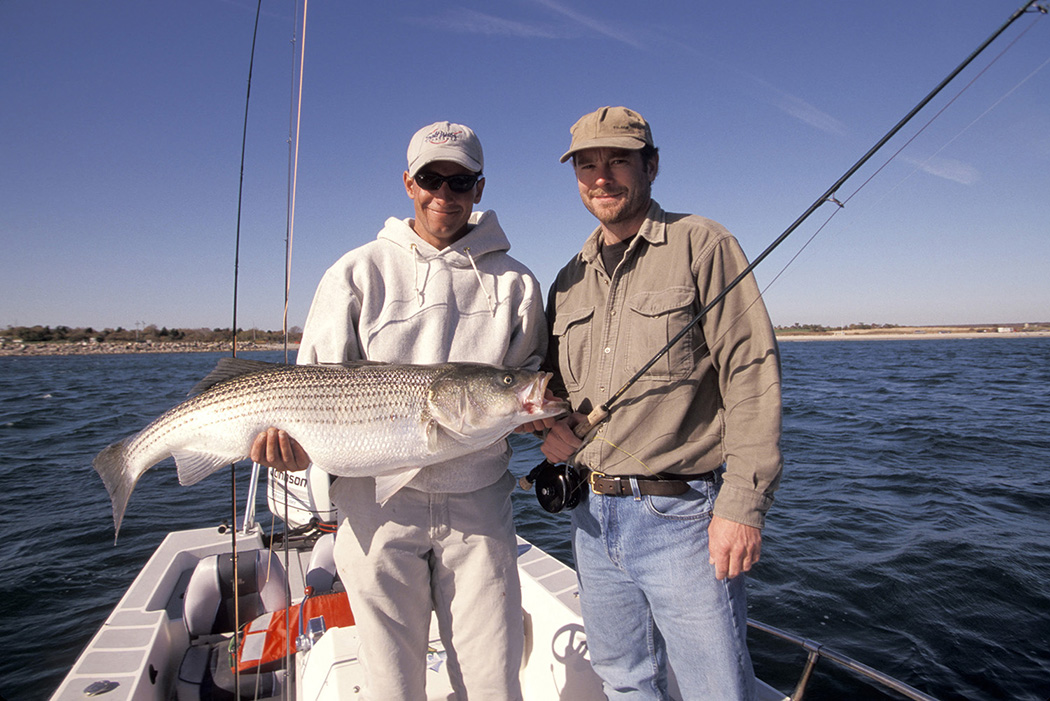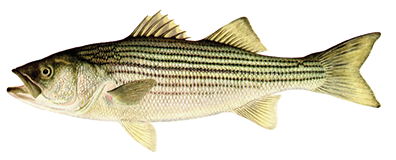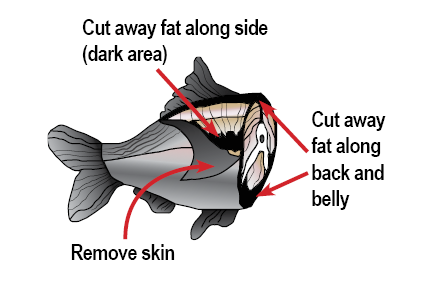Can You Eat That Striped Bass From the Hudson?

Striped bass are one of the most well-known fish in the entire Hudson River, prized by generations of fishermen. Many anglers believe striped bass are not contaminated with PCBs (polychlorinated biphenyls).
The truth is that testing over many decades have shown that some Hudson River striped bass have PCB levels often three to four times higher than other striped bass found south of the Rip Van Winkle Bridge in Catskill. How do you know if the striped bass you catch has high PCB levels? The answer is - you don’t!
What are the chances of catching a striped bass with more than 1 part per million (ppm) of PCBs?

This graphic represents the percentage of striped bass that exceed 1 ppm (part per million) of PCBs sampled in the Hudson River at Troy and Catskill in any given year between 2007 and 2015. One ppm is a health protective guideline used by the NYS Department of Health (NYS DOH) for setting PCB based fish advisories. For this reason, NYS DOH has a “do not eat” advisory on recreationally caught striped bass between Troy and Catskill and other restrictions south of Catskill (see below or the Hudson River regional advice page). This advisory has been in effect for more than 20 years.
So can you eat that striped bass? It depends.
Who you are matters
Women under 50 and children under 15 should not eat any fish from the Hudson River, including striped bass. Women who eat highly contaminated fish and become pregnant may have an increased risk of having children who are slower to develop and learn. Some contaminants may be passed on to infants in mother’s milk. Exposure to contaminants may also have a greater effect on young children than adults. Women beyond their childbearing years (over 50) and men may face fewer health risks from some chemicals. For that reason, the advice for women over age 50 and men over age 15 allows them to eat more kinds of sportfish and more often.
Where you fish matters
Even though striped bass are a migratory fish, enough data exists that shows striped bass caught between Troy and Catskill can have PCBs well above the recommended NYS DOH guidelines.
Advice if you are fishing between Troy and Catskill:
No one should eat striped bass from this section of the Hudson River. Have fun reeling them in, but consider practicing catch and release fishing.
Advice if you are fishing between Catskill and the Battery in NYC:
Men over 15 and women over 50 can eat up to one, half-pound meal per month of striped bass. See our trimming and skinning tips below for more information on how to reduce PCBs in a fish meal.
Women under 50 and children under 15 should not eat any fish from the Hudson River. Have fun reeling them in, but consider practicing catch and release fishing.
Want to see the data?

Click to see the striped bass packet (pdf, 5MB) for more details and a “deeper dive” into the data.
Skinning and Trimming to Reduce PCBs
By removing the skin and fat, and cooking so fat drips off, you can remove about 50% of PCBs from a fish meal

You can reduce the amount of PCBs in a fish meal by properly trimming, skinning and cooking your catch.
- Remove the skin and trim all the fat from the belly flap, the dark line along the sides, and the fat along the back and under the skin (see diagram).
- Cooking or soaking fish cannot eliminate the contaminants, but heat from cooking melts some of the fat in fish and allows some of the contaminated fat to drip away.
- Broil, grill or bake the trimmed, skinned fish on a rack so that the fat drips away. Do not use drippings to prepare sauces or gravies.
Interested in providing feedback about the striped bass packet? We want to hear from you!
Take this short survey (takes you to surveymonkey.com) after reading though the packet and receive a free gift for your time.
Your feedback will help improve future versions.
NYS DEC striped bass resources:
Check the most up-to-date NYS DEC regulations before you go out.
Tips for using circle hooks.